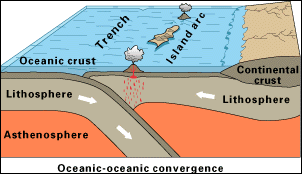Week 1: 07.11.-11.11.2011
Project 1: How does a volcano work? How does it evolve?
Some very good videos:
What I found about volcanoes’ evolution is very funny; guess what? Most scientists agree they HAVEN’T!!! They say they are probably the oldest forces of nature, even before the dinosaurs, the evolution of multi-celular creatures and some think even before uni-celular creatures started to develop. They have always been present as the earthquakes, so don’t get mad if I put mainly the same in the other question.
Project 2: How does a earthquake works? How does it evolve?
More videos:
As I mentioned before they haven’t evolve; they are pre-historical actions. They have always occurred since the core was hot and the tectonic plates moved, that means: ALWAYS LOL.
Week 2: 14.11.-18.11.2011
Week 2: 14.11.-18.11.2011
Project 3: What is a continental drift?
Is the way how the tectonic plates have moved since they were united in the Pangea.
Project 4: What is a lithospheric plate?
Is a piece of crust which forms the surface of the Earth and moves independently into the other plates.
Teacher's questions:
Students have to upload the questions and put their own examples. (pictures, links...)
1. What is a synonym of lithospheric plates?
They are also called Tectonic Plates.
2. What are the three kinds of lithospheric pates?
2. What are the three kinds of lithospheric pates?
They are oceanic, continental and mixed plates.
3. Match the principal LP (p. 129)with the three kinds of LP.
3. Match the principal LP (p. 129)with the three kinds of LP.
Oceanic plates: Pacific and Nazca Plates.
Continental: Arabian Plate
Mixed: South and North American, African, Eurasian, Indo-Australian and Antarctic plates.
4. What is special about the continental plates?
4. What is special about the continental plates?
They have a thickness of 30-40 km of continental crust, which may be as much as 60 km in high mountain ranges.
5. Where is the boundary of the S.A. and African Plates?
5. Where is the boundary of the S.A. and African Plates?
It is at the bottom of the central and south Atlantic Ocean.
6. What are the types of boundary between plates? (p.130)
6. What are the types of boundary between plates? (p.130)
They are: divergent, convergent, and transform faults.
7. What is a Rift Valley?
7. What is a Rift Valley?
It is a valley at the eastern part of Africa which is being separated from the rest of the continent, and in time will be completed the separation and the ocean floor will appear there with a ridge on the ocean floor.
8. What will happen to California eventually and why? (p.131)
8. What will happen to California eventually and why? (p.131)
It will end up being separated from the American continent and eventually become an island because the Californian Peninsula is on the Pacific Plate and not in the North American Plate and they are separating from each other.
9. How were the Himalayas formed?
9. How were the Himalayas formed?
They were formed by the collision of the Indo-Australian Plate with the Eurasian Plate. The collision pushes the land up.
10. How is a trench formed?
When two plates collide and one goes under the other and the materials melt under the surface and create a trench.




